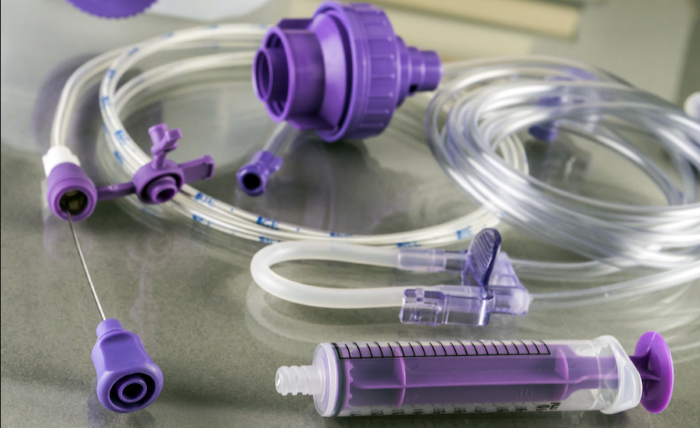Enteral nutrition is a critical aspect of medical care for patients who are unable to consume food orally. Whether due to surgery, illness, or chronic conditions, enteral feeding provides necessary sustenance and medication through a feeding tube directly into the digestive system. This method of nutrient delivery is not only vital for maintaining a patient’s health but also requires the use of specific medical equipment to administer feed reliably and safely. Among these, the feeding tube syringe plays an essential role in the process of enteral nutrition.
The Role of Enteral Nutrition in Patient Care
Enteral nutrition is employed when oral intake is inadequate or impossible. It bypasses the oral phase of swallowing, delivering nutrition directly to the stomach or intestine. This method of feeding is less invasive than parenteral nutrition, which bypasses the digestive tract altogether and involves intravenous feeding.
Moreover, enteral nutrition helps preserve gut integrity and prevents the atrophy of the gastrointestinal tract. This is particularly important for long-term nutritional support, as it utilises the natural digestive process and promotes a systemic physiological response that mimics normal eating patterns.
Feeding Tube Types and Their Applications
There are several types of feeding tubes used in enteral feeding, including nasogastric, nasojejunal, gastrostomy, and jejunostomy tubes. The choice of tube depends on the patient’s specific medical condition, the expected duration of tube feeding, and the level at which the digestive system can safely receive nutrition.
The insertion of these tubes requires a high level of care and precision. They can be placed endoscopically, radiologically, or surgically, with considerations made based on each patient’s individual needs and the expertise of the healthcare team.
Understanding Feeding Tube Syringes
In the context of enteral feeding, the feeding tube syringe serves an indispensable function. These syringes allow caregivers and medical staff to administer liquid food, water, and medications through the feeding tube directly into the patient’s digestive system.
Feeding tube syringes are specially designed for repeated use and ease of handling. Their durability and compatibility with different types of feeding tubes make them ideal for both hospital settings and home care. The plunger of a feeding tube syringe is usually smooth and easy to control, allowing for precise delivery of nutrition along with minimal discomfort for the patient.
The Importance of the Right Feeding Tube Syringe
Choosing the right feeding tube syringe is paramount for effective patient care. Important factors include the syringe’s volume capacity, its compatibility with the feeding tube, and its ease of cleaning and maintenance. A well-chosen syringe not only ensures the proper delivery of nutrients but also minimises the risk of infection or tube blockage.
Furthermore, in the case of home enteral feeding, caregivers and patients benefit from syringes that are user-friendly and reliable. Syringes that are simple to use can enhance the overall experience of enteral feeding, promoting adherence to nutritional regimes and improving patient outcomes.
Training and Education in the Use of Feeding Tube Syringes
Proper training in the use of feeding tube syringes is crucial for caregivers, be they professionals in healthcare settings or family members providing care at home. Education on the correct technique for syringe feeding, as well as hygiene and maintenance procedures, ensures that enteral nutrition is administered safely and effectively. It also empowers caregivers by providing them with the necessary skills and confidence to manage enteral feeding independently.
Healthcare providers must offer comprehensive training that includes practical demonstrations, supervised practice, and resources for ongoing support. Patient education materials should also be readily available, detailing step-by-step instructions and troubleshooting tips for common issues that may arise during enteral feeding.
Enhancing Patient Care through Quality Equipment
The provisioning of high-quality feeding equipment, including feeding tube syringes, is an integral part of patient care. Reliable and easy-to-use syringes can alleviate some of the stress associated with enteral feeding, thereby enhancing the quality of life for patients who rely on this method of nutritional support.
Healthcare institutions and providers must invest in quality equipment, as it is closely linked to patient safety, comfort, and overall satisfaction with care. In addition, regular assessment and replacement of feeding equipment, including syringes, ensures that the standard of care remains high and that patients receive the best possible support throughout their treatment.
Conclusion
Enteral feeding is a lifeline for many patients, and the feeding tube syringe is a key component of this nutritional support mechanism. It enables precise and hygienic delivery of food and medicine, directly impacting the efficacy of patient care. Investment in quality syringes and thorough training for their use are imperative in enhancing the enteral feeding process and the wellbeing of patients. As medical technology continues to evolve, the focus on such vital tools in patient care will doubtless continue to grow, reinforcing the link between quality equipment and improved patient outcomes.
The commitment to excellence in enteral feeding practices, supported by the right tools and education, highlights the healthcare industry’s dedication to compassionate and effective patient care. In this regard, feeding tube syringes stand out as essential instruments that make a significant difference in the lives of those who depend on them for sustenance and medication administration.


